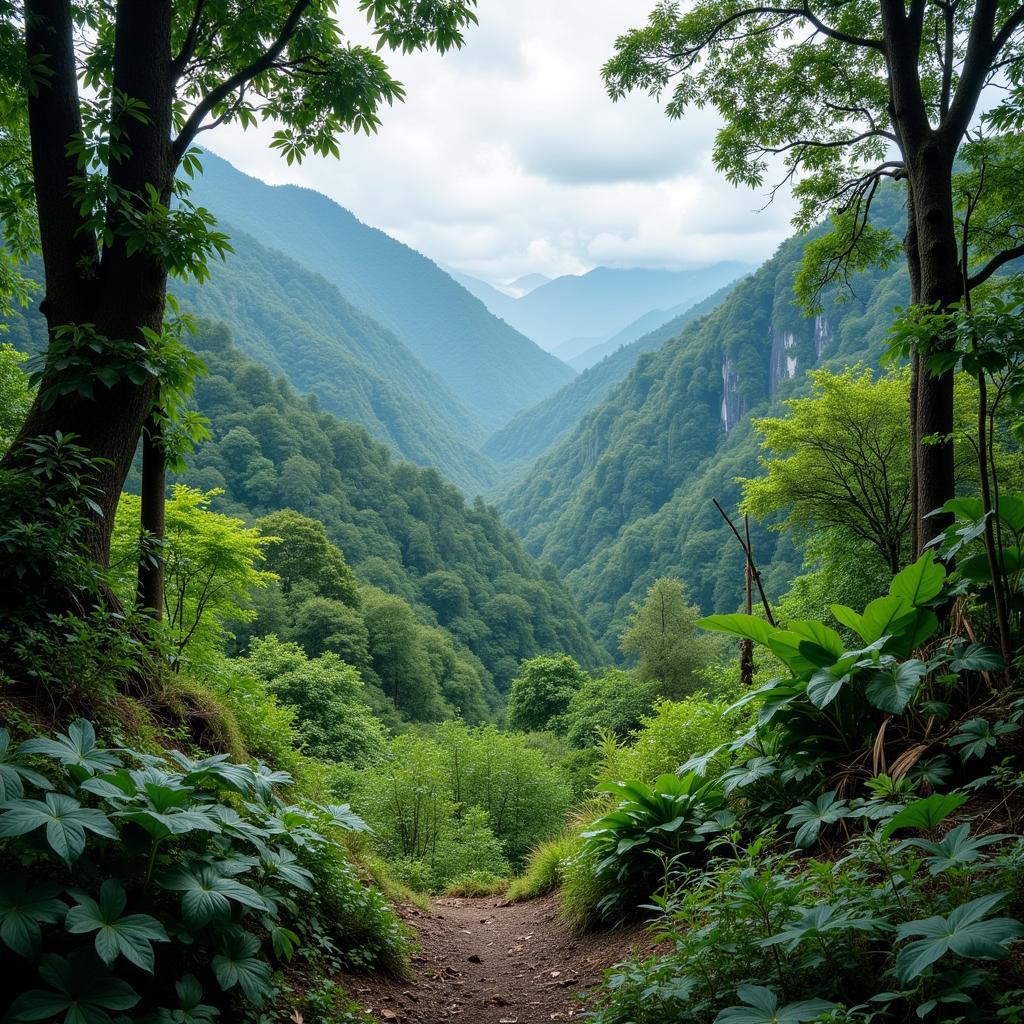The temperate rainforest, a realm of lush greenery and abundant life, thrives on a complex and fascinating food web. This intricate network of energy transfer, from the smallest fungi to the largest predators, dictates the health and balance of this unique ecosystem. Understanding the food web of a temperate rainforest provides valuable insight into the interconnectedness of life and the importance of preserving these vital habitats.
Producers: The Foundation of the Food Web
At the base of the temperate rainforest food web lie the producers. These organisms, primarily plants, algae, and some types of bacteria, convert sunlight into energy through photosynthesis. They form the foundation upon which all other life depends. From towering trees like Douglas firs and Western red cedars to the vibrant mosses and ferns carpeting the forest floor, producers capture the sun’s energy and transform it into usable forms of food. These plants then become sustenance for the primary consumers.
Primary Consumers: The Herbivores
The primary consumers in a temperate rainforest are the herbivores. These animals, ranging from tiny insects like aphids and caterpillars to larger mammals like deer and elk, feed directly on the producers. Squirrels feast on nuts and seeds, while slugs and snails munch on decaying leaves and fungi. This level of the food web plays a crucial role in transferring energy from plants to the higher trophic levels.
Secondary Consumers: The Carnivores and Omnivores
Next in the food web are the secondary consumers, which consist of carnivores and omnivores. Carnivores, such as weasels, bobcats, and owls, prey on the primary consumers. Omnivores, like raccoons and bears, consume both plants and animals, playing a versatile role in the food web. These predators help control the populations of herbivores, preventing overgrazing and maintaining the balance of the ecosystem.
Tertiary Consumers: The Apex Predators
At the top of the food web sit the tertiary consumers, also known as apex predators. These are the animals that have few, if any, natural predators. In a temperate rainforest, this might include wolves, cougars, and large birds of prey like eagles. These apex predators play a crucial role in regulating the populations of other animals in the food web, ultimately influencing the health and stability of the entire ecosystem.
Decomposers: The Recyclers
An often overlooked but essential component of the food web is the decomposers. These organisms, including fungi, bacteria, and invertebrates like earthworms and millipedes, break down dead plant and animal matter, returning essential nutrients to the soil. This process of decomposition completes the cycle of life, providing the nutrients necessary for the producers to thrive and restarting the entire food web process.
What Happens When the Food Web is Disrupted?
Disruptions to the food web, such as the introduction of invasive species or habitat loss, can have cascading effects throughout the entire ecosystem. The removal of a key species, even a seemingly insignificant one, can cause imbalances and threaten the survival of other organisms.
How Can We Protect the Temperate Rainforest Food Web?
Protecting the temperate rainforest food web requires a multi-faceted approach. Conservation efforts, such as protecting habitats, reducing pollution, and managing invasive species, are crucial for maintaining the delicate balance of this complex ecosystem.
 Protecting the Temperate Rainforest Ecosystem
Protecting the Temperate Rainforest Ecosystem
Conclusion: The Interconnectedness of Life in the Temperate Rainforest
The food web of the temperate rainforest is a testament to the intricate interconnectedness of life. From the smallest decomposer to the largest apex predator, each organism plays a vital role in maintaining the health and balance of this unique ecosystem. By understanding and protecting these complex interactions, we can ensure the continued survival of the temperate rainforest and the incredible biodiversity it supports.
FAQ
- What is the primary source of energy in a temperate rainforest food web? Sunlight
- What are some examples of apex predators in a temperate rainforest? Wolves, cougars, and eagles.
- What role do decomposers play in the food web? They break down dead organic matter and return nutrients to the soil.
- How does habitat loss impact the temperate rainforest food web? It disrupts the balance and can lead to species decline.
- What is the importance of understanding the food web? It helps us appreciate the interconnectedness of life and the need for conservation.
- What are some primary consumers in a temperate rainforest? Deer, elk, squirrels, insects.
- What are some secondary consumers in a temperate rainforest? Weasels, bobcats, raccoons, bears.
Need help with temperate rainforest ecosystems or food webs? Contact us at Phone Number: 02437655121, Email: minacones@gmail.com Or visit our address: 3PGH+8R9, ĐT70A, thôn Trung, Bắc Từ Liêm, Hà Nội, Việt Nam. We have a 24/7 customer service team.